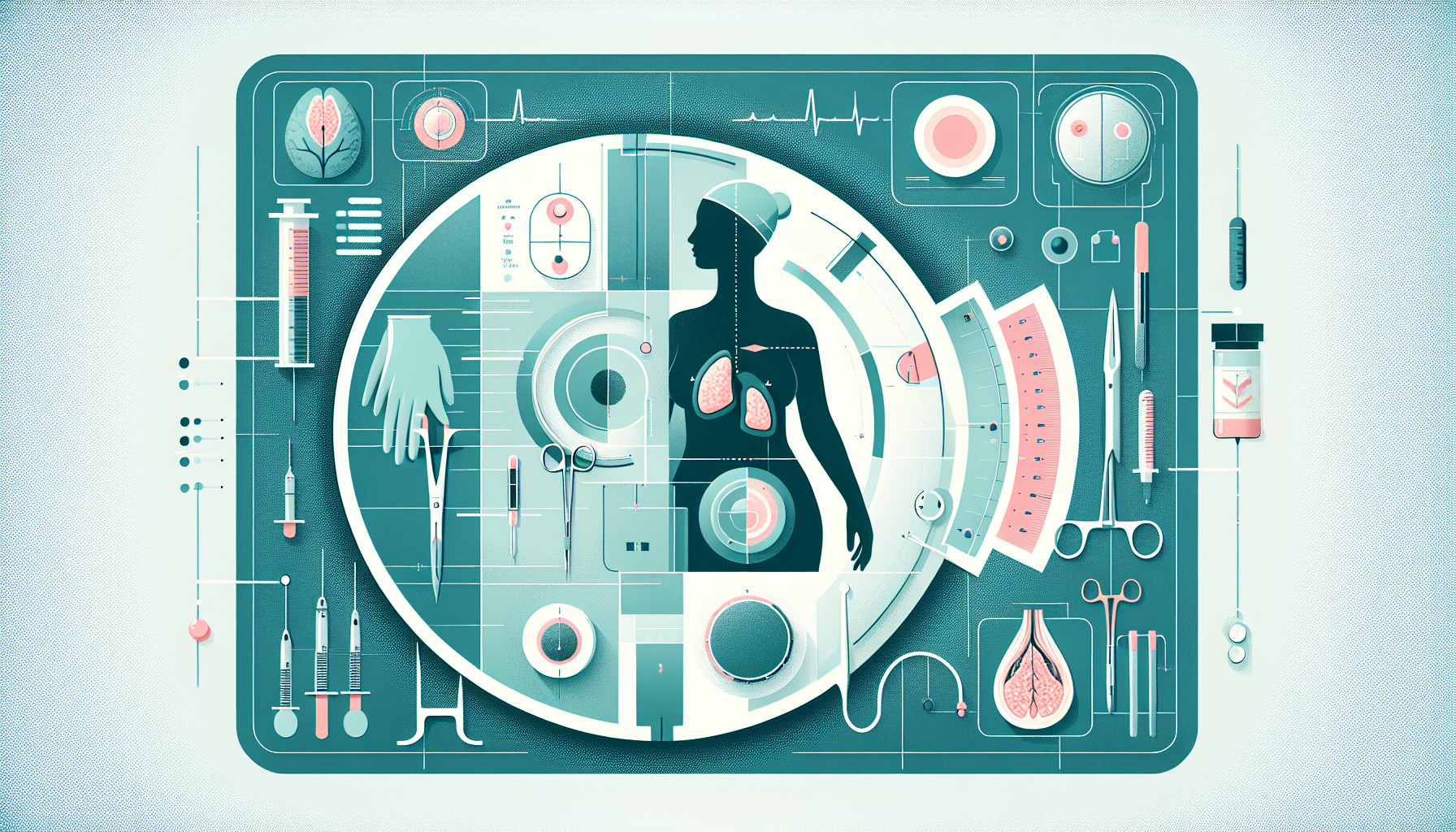Our Summary
This research paper is about a method for treating patients with advanced breast cancer who have had a radical mastectomy, which leaves a large wound on the chest. The common technique used to close this wound is called reverse abdominoplasty, which is typically used to improve the appearance of the stomach. The researchers looked back at patients who had this procedure done after their mastectomy at a specific cancer center from June 2017 to July 2022.
They found that this method was used on six patients with a total of nine chest wounds. The tumors removed were quite large, and the mastectomies were substantial. The procedure took on average about 3 hours and the patients usually stayed in the hospital for a little over 2 days. After surgery, all patients were given additional treatment, which started on average about 44 days after surgery.
The researchers concluded that reverse abdominoplasty is a straightforward and safe way to close large chest wounds following advanced breast cancer surgery. It doesn’t take long, doesn’t require a long hospital stay, and allows additional treatment to start relatively quickly.
FAQs
- What is the common technique used to close the wound after a radical mastectomy?
- How long does the reverse abdominoplasty procedure take and how long is the hospital stay after the surgery?
- How soon after surgery can additional treatment begin when using the reverse abdominoplasty method?
Doctor’s Tip
One helpful tip a doctor might tell a patient about mastectomy is to follow post-operative care instructions carefully to ensure proper healing. This may include keeping the surgical site clean and dry, avoiding heavy lifting or strenuous activities, and attending follow-up appointments with your healthcare provider. It’s also important to talk to your doctor about any concerns or questions you may have throughout the recovery process.
Suitable For
Patients who are typically recommended for mastectomy include those with:
Advanced stage breast cancer: Mastectomy may be recommended for patients with advanced stage breast cancer that has spread beyond the breast tissue.
Large tumors: Patients with large tumors in the breast may be recommended for mastectomy to ensure complete removal of the cancerous tissue.
Genetic mutations: Patients with certain genetic mutations, such as BRCA1 and BRCA2, may be at a higher risk for developing breast cancer and may be recommended for mastectomy as a preventive measure.
Recurrent breast cancer: Patients who have had a recurrence of breast cancer after previous treatment may be recommended for mastectomy to remove any remaining cancerous tissue.
Inflammatory breast cancer: Patients with inflammatory breast cancer, a rare and aggressive form of breast cancer, may be recommended for mastectomy as part of their treatment plan.
Patients who are not candidates for breast-conserving surgery: Some patients may not be suitable candidates for breast-conserving surgery, such as lumpectomy, and may be recommended for mastectomy instead.
Overall, the decision to undergo mastectomy is typically made on a case-by-case basis, taking into consideration the individual patient’s medical history, tumor characteristics, and personal preferences.
Timeline
Before the mastectomy:
- Patient undergoes various diagnostic tests and consultations to determine the extent of the cancer and the need for a mastectomy.
- Patient may undergo chemotherapy or radiation therapy to shrink the tumor before surgery.
- Patient meets with a plastic surgeon to discuss reconstructive options after the mastectomy.
After the mastectomy:
- Patient undergoes the mastectomy surgery, which typically takes a few hours.
- Patient may stay in the hospital for a few days to recover from the surgery.
- Patient may experience pain, swelling, and limited range of motion in the chest and arm on the side of the mastectomy.
- Patient may begin physical therapy to regain strength and mobility in the chest and arm.
- Patient may start additional treatments such as chemotherapy or hormone therapy to prevent the cancer from returning.
- Patient may undergo reconstructive surgery to restore the appearance of the breast, either immediately after the mastectomy or at a later time.
- Patient may attend regular follow-up appointments with their medical team to monitor their recovery and overall health.
What to Ask Your Doctor
Here are some questions a patient should ask their doctor about mastectomy:
- What are the potential risks and complications associated with a mastectomy?
- How will a mastectomy affect my physical appearance and body image?
- What are the different types of mastectomy procedures available and which one is recommended for my specific situation?
- Will I need additional treatments such as chemotherapy or radiation therapy after the mastectomy?
- How long is the recovery period after a mastectomy and what can I expect during this time?
- Are there any alternative treatments or procedures available instead of a mastectomy?
- How will a mastectomy impact my future risk of developing breast cancer?
- Will I need breast reconstruction surgery after the mastectomy and if so, what are the options available?
- What support services or resources are available to help me cope with the emotional and psychological effects of a mastectomy?
- How often will I need follow-up appointments and screenings after the mastectomy to monitor for any signs of recurrence or complications?
Reference
Authors: Whalen K, Liu L, Rejano CJ, Mhaskar R, Khakpour N, Dayicioglu D. Journal: Ann Plast Surg. 2023 Mar 1;90(3):204-208. doi: 10.1097/SAP.0000000000003439. PMID: 36796040
